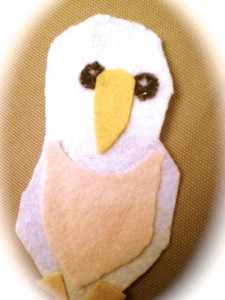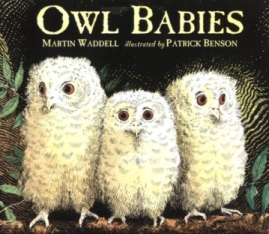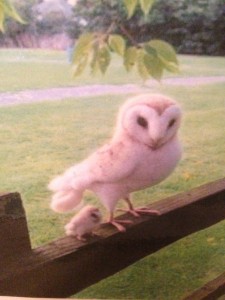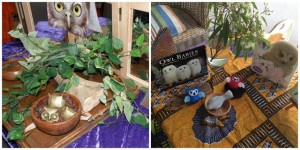
My last post told the story of Tess, and how she inspired my investigation into mindset in the early childhood set. The natural follow up is how what I learned about her mindset affected the way her teachers interacted with her and subsequently her experience in the classroom. And how was this, in turn, reflected in our teaching approach?
We met and read Tess’s story. We pondered the metaphor of the Little Horse for her and what it meant that she didn’t want to wear a saddle, carry a rider or go to the race. We all agreed that if Tess were pushing herself to take risks she would grow and blossom as a learner. Once she was engaged and confident in the classroom, we felt her cries for attention and her venting frustration through difficult behavior would likely fade out.
But: if overcoming challenges and growing stronger is not a child’s natural motivation, then how do we get them to take the risk?
This question is especially relevant in a classroom where teachers are guides and facilitators and self motivation is seen as a key piece for a child’s success
Based on Galveston’s research, a different approach needs to be taken with prevention-minded individuals:
For one, language is key. Rather than focusing on the reward a prevention-minded little one will get if they take on a challenge, frame things in terms of what they will lose if they do not. We considered how this might translate to our work with Tess, both academic and social/emotional. The Tinte Blocks were one of her favorite works, yet she resisted a teacher’s support when she could not recreate the three dimensional constructions of her peers. Neither would she join in to watch and learn. She worked alone, grew frustrated and sat fiddling idly with the blocks.
And so, I sat beside her. Rather than urging her to show her peers what she was doing with the blocks with mustered pluck, I said, instead: “Tess, I noticed that these girls are waiting to use the Tinte Blocks. You can say you want to work alone, but if you do you won’t get to see how Josie and Juliette make those square houses. You might not get to learn how.” She didn’t leap right away, but she didn’t shrink back. And some time later she began joining in. While she still needed a teacher to hang in with her in these initial social interactions, to remind her, when she veered toward prickly behavior, that if she acted that way the other kids would leave, she began to respond, to temper herself and let her social curiosity take over.
At the same time we took a new approach to her frustrating behavior during meetings. Rather than pulling her aside before gathering on the rug to encourage her to keep her shoes on and stay in her spot, we took a different approach. The teacher leading would establish the ground rules for everyone, and Tess would be given one reminder. She knew if she chose to sit in the center of the rug and take off her shoes she would miss out on getting to perform the special job we had waiting for her. Her choice. It would go to someone else, the opportunity lost until the next day.
When we reviewed her progress after several weeks it was agreed upon. Tess had turned a corner. Like all matters of development, things did not take a purely linear course and there were bad days. Yet the good days prevailed and soon we were getting reports from  home that she had risen to new levels of maturity and calm. Over the slide from spring to summer we saw her find her place in our classroom community. Put down roots. Blossom.
home that she had risen to new levels of maturity and calm. Over the slide from spring to summer we saw her find her place in our classroom community. Put down roots. Blossom.
The next fall, Mindset stories became part of the Blue Room curriculum. Baby Owl made his appearance in September. I watched and observed the first two weeks. The children, most of whom at two were dealing with some pretty intense separation, were very interested in the book, Owl Babies by Marin Waddell, a classic for the littlest preschoolers.

Baby Owl was simply constructed as felt, and was presented as a provocation one day, with a larger Mama Owl and some picture cards. As an unexpected testament to the book, when searching for a good Reggio website to explain the term provocation, imagine my surprise when I happened across this website and saw a similar Owl Babies provocation in the first two photographs!

Children were invited to play and I told them this story:
Once there was a Baby Owl and a Mama Owl. They lived together in a cozy hole in a tree, lined with warm, soft feathers. They ate and cuddled.
One day Mama Owl said to Baby Owl, “I have to go Baby Owl to get us food. You stay here, I will be back soon.”
Here I asked, for the first time, “What does Baby Owl say to Mama Owl? Does she want to stay in the nest or does she want to come with Mama?” Based on the child’s answer I continued the story one of two ways:
So the Baby Owl waited for Mama for a long time and then she finally came back and they ate lots of grubs and went to sleep.
Or:
The Baby Owl said, “But Mama, I want to come with you!”
In this case, Mama grows serious:
“Baby Owl, the way is long and difficult. We have to cross a high fence. I can hold your hand but if you fall I will not be able to catch you. We will have to cross a deep pond by jumping from stump to stump – I will not be able to be beside you and you will not be able to go back on your own. Then we will have to sneak by a mean angry cat! You cannot ge scared and run away or the cat will catch you. You are so little still…are you sure you feel ready?”

At each point in the story, the child is able to make a choice, and, if she chooses, the next picture card is flipped and the story moves on.
The project was fascinating. By the second week children were elbowing each other aside to take a turn at the Baby Owl table.
The results of the project? This post is too long, that’s the next one!
Comment!
